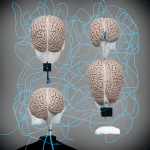As parents, caregivers or educators, dealing with children who struggle with dyslexia can sometimes feel overwhelming. Dyslexia affects approximately 5-20% of children worldwide, causing difficulties with reading, writing and spelling. While it may seem like a daunting obstacle, professional support systems are in place to help these children. A key resource in this support network is occupational therapy. Occupational therapists work with children with dyslexia to develop visual and motor skills, crucial for reading and writing. This article will explore how occupational therapy can support children with dyslexia, improving their learning capabilities and overall quality of life.
The Role of Occupational Therapists in Dyslexia
Occupational therapists play a unique role in supporting children with dyslexia. They work with these children to improve their learning skills, focusing on enhancing their reading and writing abilities, and addressing any motor difficulties or dysgraphia associated with dyslexia.
A lire en complément : Can Technology-Driven Urban Farming Solutions Contribute to Food Security in Growing Cities?
Dyslexia affects the way children process language, making it difficult for them to read and write accurately and fluently. Additionally, dyslexia can impact a child’s motor skills, causing issues with handwriting, known as dysgraphia. Occupational therapists use various strategies and tools to help children overcome these challenges.
Occupational therapists conduct thorough assessments to understand a child’s strengths and weaknesses. They then develop individualized interventions tailored to the child’s needs. These therapies may include visual processing activities, fine motor exercises, and sensory integration therapies, all aimed at improving the child’s reading and writing skills.
A découvrir également : How to Ensure Proper Dental Care for Your Pet Rabbit?
How Occupational Therapy Helps with Reading Skills
Reading is a complex process that involves several cognitive, sensory, and motor skills. Children with dyslexia often struggle with skills like phonemic awareness, decoding, and fluency, all of which are crucial for reading.
Occupational therapists can help children with dyslexia improve their reading skills in several ways. They often use multisensory strategies that engage multiple senses simultaneously. For example, a therapist might have a child trace letters with their finger while saying the letter’s sound. This approach reinforces the connection between the visual shape of the letter, its corresponding sound, and the motor act of forming it.
Therapists also work with children on visual processing skills, such as tracking. This means following words across a page, which is crucial for reading. Therapists may use exercises and activities that strengthen the eye muscles and improve control over eye movements.
Occupational Therapy for Developing Writing Skills
Occupational therapists can also support children with dyslexia in developing their writing skills. These children often struggle with dysgraphia, a condition affecting handwriting. Dysgraphia can manifest as difficulties with forming letters, maintaining consistent spacing and size, and writing fluently.
Therapists use a combination of therapies to help children improve their handwriting skills. This might include fine motor exercises to enhance hand strength and dexterity, visual-motor integration activities to improve hand-eye coordination, and sensory processing therapies to help children manage sensory information effectively.
Additionally, occupational therapists might introduce assistive technology tools such as voice-to-text software or typing programs to support children who continue to struggle with handwriting.
Speech Therapy and Dyslexia
Speech therapy often complements occupational therapy services for children with dyslexia. Dyslexia can impact a child’s phonological awareness – the understanding of how words are made up of smaller units of sound. This can make it difficult for them to sound out words when reading or spell words when writing.
Speech therapists work with children to improve their phonological awareness, which can enhance their reading and writing skills. They might use activities and exercises that focus on identifying and manipulating sounds in words, such as rhyming games or phonics activities.
While speech therapists focus on the language-based aspects of dyslexia, occupational therapists can support this work by helping to improve the motor skills needed for speech, such as oral motor exercises to enhance articulation.
The Multifaceted Support of Occupational Therapy
In conclusion, occupational therapy offers multifaceted support for children with dyslexia. Occupational therapists work holistically, addressing the varied challenges these children might face – from reading and writing difficulties to motor skills problems and potential speech issues. With their support, children with dyslexia can improve their learning skills and grow more confident in their abilities. Occupational therapy offers practical, tangible solutions, significantly improving the lives of children with dyslexia.
Integrating Occupational Therapy into Daily Routine
An essential aspect of occupational therapy is the ability to integrate learned techniques into a child’s daily routine. Occupational therapists work alongside parents and caregivers to ensure that the strategies and exercises performed during therapy sessions can be carried out in the child’s everyday life.
In the context of dyslexia, occupational therapists develop a plan that focuses on improving the child’s reading and writing skills. Simple exercises such as tracing letters in sand or using multisensory materials like shaving cream can make the practice of reading and writing more engaging for the child. The aim is to create a positive and encouraging environment where the child feels motivated to learn and develop their skills.
Occupational therapists also address physical difficulties that children with dyslexia might encounter. For instance, they might provide exercises to improve fine motor skills, crucial for tasks like holding a pencil or tying shoelaces. Sensory integration strategies are often used to help children better process sensory information, which can be overwhelming for children with dyslexia.
By working collaboratively with the family and educators, occupational therapists ensure that the therapy’s benefits are not limited to the therapy sessions but extend to the child’s daily activities. This approach fosters a supportive and encouraging environment conducive to the child’s learning and development.
Collaborative Approach to Therapy Services
Occupational therapy does not work in a vacuum; it often works best when combined with other types of therapies, such as speech therapy or physical therapy. This collaborative approach allows for comprehensive support for children with dyslexia, addressing both their learning difficulties and physical challenges.
For instance, occupational therapy and speech therapy can complement each other well. While the occupational therapist works on improving reading and writing skills through visual perception and fine motor exercises, the speech therapist focuses on enhancing the child’s phonological awareness. Together, they provide a comprehensive approach to overcoming the challenges of dyslexia.
Physical therapy can also be beneficial for children with dyslexia. It can address gross motor skills, which are essential for balance and coordination. Enhancing these skills can improve a child’s ability to engage in physical activities, enhancing their overall quality of life.
Conclusion: A Comprehensive Support System
In sum, occupational therapy offers comprehensive support to children with dyslexia, helping them navigate their learning difficulties and improve their quality of life. By focusing on enhancing reading and writing skills and addressing physical challenges, occupational therapists provide invaluable support to these children.
Furthermore, integrating therapy into the child’s daily routine and employing a collaborative approach with other therapy services such as speech therapy and physical therapy ensures a comprehensive support system for the child with dyslexia.
Education is a journey, and while dyslexia might present some hurdles along the way, with the right support from occupational therapists and other professionals, children with dyslexia can confidently navigate their learning journey and reach their full potential.










